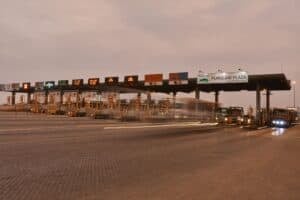With its millions of visitors every year and the buses, supply trucks, noodle shops and fridge magnets, Japan’s Mount Fuji...

With its millions of visitors every year and the buses, supply trucks, noodle shops and fridge magnets, Japan’s Mount Fuji is no longer the peaceful pilgrimage site it once was.
Now authorities have had enough, saying the number of hikers trekking up the world-famous volcano – night and day is dangerous and an ecological embarrassment.
“Mount Fuji is screaming,” the governor of the local region said last week.
Hailing its religious importance and its inspiration to artists, in 2013 United Nations Educational, Scientific and Cultural Organisation (Unesco) added the “internationally recognised icon of Japan” to its World Heritage List.

Visitor challenges and facilities at Mount Fuji
But as has happened in places such as Bruges in Belgium or Rio de Janeiro’s Sugarloaf Mountain, the designation has been both a blessing and a curse. Visitor numbers more than doubled between 2012 and 2019 to 5.1 million – and that’s just for Yamanashi prefecture, the main starting point.
It’s not just during the day that a stream of people trudges through the black volcanic grit on their way up the 3 776 metre mountain.
At night, long lines of people – on their way up to see the sun rise in the morning – trek upwards with torches on their heads. The main starting-off point is a car park that can only be reached by taxi or buses that take a couple of hours from Tokyo, around 100km away.
Greeting visitors is a complex of restaurants and shops selling souvenirs as well as snacks and drinks for walkers before they set off. They are powered by diesel generators and the thousands of litres of water they use have to be brought up in lorries.
ALSO READ: An adventurer’s guide to Cape Town’s bucket-list activities

Challenges and safety concerns on Mount Fuji
Trucks also take all the rubbish down.
“I saw a lot of food waste and empty bottles of drinks lying around the hand-washing area of the toilet,” complained Japanese hiker Yuzuki Uemura, 28.
Masatake Izumi, a local official, said the high number of people increased the risk of accidents.
Some people who climb at night “get hypothermia and have to be taken back to first aid stations”, he said. At least one person has died so far this season. For an optional access fee of 1 000 yen (about R130), visitors get a booklet in Japanese – there is a QR code for the English version – with some dos and don’ts.
But some don’t realise how tough the five-to-six-hour climb is to the top, where oxygen levels are lower and where the weather can change quickly.
“It’s almost winter up there,” said Rasyidah Hanan, a 30-year-old hiker from Malaysia. “People should be filtered a little bit because some people were not ready to climb Mount Fuji. They were like in really light clothes… Some of them looked sick.” As tourist numbers get back to pre-pandemic levels, it’s not only Mount Fuji whose returning crowds have authorities worried.

Government’s efforts to address overcrowding and etiquette issues at tourist sites
This week government ministers met to discuss measures to tackle what Kenji Hamamoto, a senior Japan Tourism Agency official, called “overcrowding and breaches of etiquette” across most visited tourist sites.
For Mount Fuji, authorities announced last month they would impose crowd control measures for the first time if paths got too busy.
The announcement alone had an effect and in the end no such measures were taken, Izumi said. Visitor numbers are expected to be down slightly this year from 2019, but in 2024 they could rise again as tourists, particularly from China, return.
Yamanashi’s governor Kotaro Nagasaki said last week Japan needed to take measures to ensure Mount Fuji did not lose its Unesco designation. One solution, he said, could be constructing a light rail system to replace the main road leading to the main starting point for hikers.
“We firmly believe that with regard to Mount Fuji tourism, a shift from a quantity approach to a quality one is essential,” Nagasaki said.






